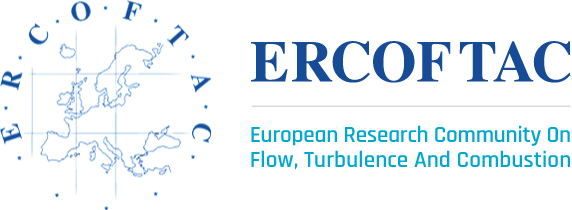Objectives:
The ERCOFTAC SIG39 Symposium, Coherent Structures in Aeroacoustics, will gather experts to discuss recent progress in the identification, understanding and modelling of coherent structures in turbulent flow. The symposium objective will be to debate on the role played by coherent structures in aeroacoustics and identify perspectives for future research.
Registration: https://ercoftac.segreteria-eventi.it/
This symposium is open to everyoneinterested andit is NOT required to submit the abstract to register.
Chairpersons:
Peter Jordan
Institut Pprime, CNRS · Université de Poitiers · ISAE-ENSMA,
Poitiers, France
Matteo Mancinelli
Dept. Civil Eng., Computer Science & Aeronautics,
Università Roma Tre, Rome, Italy
Scientific committee:
- Dan Bodony
- Christophe Bogey
- Roberto Camussi
- Damiano Casalino
- André Cavalieri
- Tim Colonius
- Daniel Edgington-Mitchell
- Flavio Giannetti
- Lutz Lesshafft
- Stephane Moreau
- Kilian Oberleithner
- Dani Rodriguez
- Michel Roger
- Oliver Schmidt
- Christophe Schram
- Aaron Towne
- William Wolf
Programme and all information is available here
The venue:
The symposium will be held in the lecture hall of the Department of Civil, Computer Science and Aeronautical Technologies Engineering of Università degli Studi Roma TreThe main entrance is in Via Vito Volterra 62 (Rome), 10 minutes by walk from the subway station “Basilica San Paolo” of line B (blue line).
Context and motivation:
Coherent structures, first observed in turbulent shear flow in the 1960s, motivate the search for simplified models that would clarify the mechanisms by which turbulence is sustained. In the past twenty years, thanks to advances in numerical simulation, modelling and experimental diagnostics, our understanding of coherent structures in turbulent shear flow has progressed considerably and promising new modelling paradigms are emerging [5].
Aeroacoustics applications involve a variety of flow regimes, many of which are turbulent. An aircraft at take-off or approach generates wakes, boundary layers, free shear-layers, trailing edge flow, resonant flow, turbulence that sheds from, impinges on and grazes all manner of surfaces. . . In many of these regimes, there is evidence for the existence and aeroacoustic importance of coherent structures; in others, the role they play remains to be clarified.
Aeroacoustic modelling frameworks rely on input from a turbulent field, in the form of direct spacetime data in hybrid approaches, via the statistics that inform sound-source models in acoustic analogies. Simplified models of turbulent flow are therefore of interest for aeroacoustics, on account of the low-cost prediction methodologies they would enable and the opportunities they provide for understanding mechanisms. These points have been highlighted in recent reviews on trailing-edge noise [4], on jet noise [3, 1] and on resonant flows [2].
Research in aeroacoustics is increasingly supported by an abundant availability of data. Modern experimental measurement techniques, along with new computational and data-storage architectures, make possible the generation, storage and mining of Big Data. And this has led to a flourishing of new data-processing algorithms and methodologies. Among these, modal decomposition techniques, particularly well-suited to the identification of coherent structures in turbulence, are finding broad application [6, 7].
The goal of the symposium is to bring together members of the scientific community for a three-day event involving presentations on, and discussion of, coherent structures, their role in aeroacoustics, and the perspectives they invite for future developments.
The event will comprise oral presentations and round-table discussions. Social events will include 3 lunches and a symposium dinner on the final night.
Bibliography:
[1] A. V.G. Cavalieri, P. Jordan, and L. Lesshafft. Wave-packet models for jet dynamics and sound radiation. Applied Mechanics Reviews, 71(2), 2019.
[2] D. Edgington-Mitchell. Aeroacoustic resonance and self-excitation in screeching and impinging supersonic jets–a review. International Journal of Aeroacoustics, 18(2-3):118–188, 2019.
[3] P. Jordan and T. Colonius. Wave packets and turbulent jet noise. Annual Review of Fluid Mechanics, 45(1), 2013.
[4] S. Lee, L. Ayton, F. Bertagnolio, S. Moreau, T. P. Chong, and P. Joseph. Turbulent boundary layer trailing-edge noise: Theory, computation, experiment, and application. Progress in Aerospace Sciences, 126:100737, 2021.
[5] B.J. McKeon. The engine behind (wall) turbulence: perspectives on scale interactions. Journal of Fluid Mechanics, Perspectives, 817, 2017.
[6] K. Taira, S. L. Brunton, S.T.M. Dawson, C.W. Rowley, T. Colonius, B. J. McKeon, O. T. Schmidt, S. Gordeyev, V. Theofilis, and L. S. Ukeiley. Modal analysis of fluid flows: An overview. Aiaa Journal, 55(12):4013–4041, 2017.
[7] A. Towne, O. T. Schmidt, and T. Colonius. Spectral proper orthogonal decomposition and its relationship to dynamic mode decomposition and resolvent analysis. Journal of Fluid Mechanics, 847:821–867, 2018.
Abstract submission:
A 200 word abstract should be submitted to ercoftacaeroacoustics@gmail.com before the 29th March 2024
coherent_structures_in_aeroacoustics_symposium_2024_full_information_booklet.pdf

